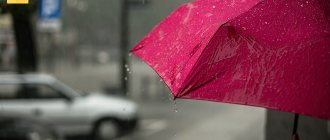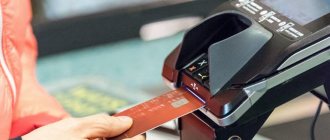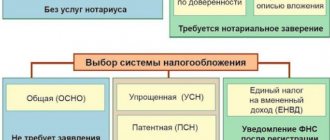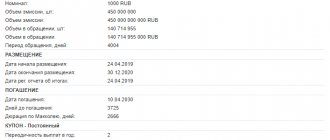Manufacturing technology
Main stages of production:
- cleaning the material, removing the landing end and foreign objects;
- squeezing the metal out of the cut ring (in order to separate the remaining rubber);
- cutting the tire into thin strips (width 30-50 mm);
- separation of the second landing ring;
- cutting rubber bands into smaller pieces;
- forming rubber blanks;
- grinding of workpieces on rollers, resulting in rubber crumbs and powder;
- dividing the material into fractions;
- extraction of textile cord;
- further grinding of crumbs in pure form and with textile cord;
- placement of finished products in the warehouse.
Textile cord is used for the manufacture of fiber-reinforced concrete, sports equipment, material for plugging wells, etc.
Pros and cons of crumb rubber
An excellent alternative to many floor coverings are products made from tire crumbs. Fine rubber flour and larger crumbs have a number of significant advantages:
- Safety
. Rubber crumb coating has an excellent shock-absorbing effect and the lowest slip coefficient. Thanks to this, the shoes do not slip on the rubber track, reducing the risk of falls and injuries. - Durability and reliability
. The rubber coating is resistant to both mechanical and chemical influences. During operation, there are no scratches or other minor defects on it, and it is not afraid of precipitation. Thanks to these properties, a rubber carpet can be used without restoration for approximately 10-15 years. - Dryness
. Even after heavy rainfall, the rubber coating dries quickly due to the waterproof properties of the material. - Aesthetics
. Products made from crumbs look attractive in appearance, because they can be painted in a variety of colors that will not fade over time.
The disadvantages of products made from recycled rubber include the following:
- Flammability
. It is not recommended to install products made from crumb rubber near sources of open fire. - Considerable cost
. Compared to other building materials, rubber flooring will be more expensive.
Financial part
To calculate the profitability of the project, the volume of tire processing of 150 tons per month is taken as a basis, from which 100 tons of crumbs and powder can be obtained, as well as 30 tons of textile cord.
- purchase of used tires (1,500 rubles per ton) – 225,000 rubles;
- line productivity – 300 kg/hour;
- purchase and installation of equipment – 10,000,000 rubles;
- daily work time – 16 hours (2 shifts);
- sale of finished rubber powder and crumbs (15 thousand rubles per ton) – 1,500,000 rubles;
- sale of textile cord (2 thousand rubles per ton) – 60,000 rubles;
- revenue amount – 1,560,000 rubles;
- production expenses (salaries, rent, utilities and tax payments) – 20,000 rubles. in a day;
- monthly expenses (when working 20 days a month) – 400,000 rubles;
- net profit - 1,560,000 rubles. — 400,000 rub. – 225,000 rub. = 935,000 rub.
- payback period – 11 months.
Please note that the calculations are based on the minimum price for crumb rubber, so the indicated profit in practice is usually higher.
Business registration
At the start, you need to decide on the organizational and legal form. This choice depends on the scale of the project and methods of attracting investment. If you use your own funds for business, you can choose an individual entrepreneur - this requires a minimum package of documents and a small amount (800 rubles for the state fee). It will take approximately 5 working days to complete the documents.
If you plan to attract investors or work with a partner, you need to open an LLC. Registering an LLC will take several weeks and will cost more, but in case of bankruptcy, the entrepreneur is liable only with the authorized capital, and not with personal property (for which an individual entrepreneur is not insured).
No license is required for the production of crumb rubber.
Laying crumb rubber
Let's look at how a seamless coating is created from crumb rubber. In order for it to serve for a long time, coping with the functions assigned to it, a certain sequence must be followed when laying:
- Let's prepare the base. We clean it of dust and debris. If the coating will be laid on the ground, then first you need to lay a layer of geotextiles, which will prevent the erosion of the ground.
- We install a fence. For this purpose, you can take a rubber or concrete curb.
- We prime the rigid base. To do this, prepare a liquid mixture of polyurethane glue and organic solvent.
- Place the pre-prepared mixture on the surface of the base.
- We level it using a rule soaked in white spirit or simply in soapy water.
- We roll the surface with a special roller, but you should not press too hard, as excessive compaction will reduce the waterproof properties of the coating.
Glue for crumb rubber
To obtain products from crumb rubber, it is mixed with special adhesive binders, which are divided into one- and two-component:
- Polyurethane adhesive for crumb rubber
. Some of the most popular one-component formulations are the products TETRAPUR, Duayen A-121 and others. They are used to produce roll and modular products and seamless coatings. - Bitumen mastic
. It has low strength and elasticity and cannot be painted. This viscous adhesive mixture is used in the manufacture of piece or sheet materials. The mastics from TechnoNIKOL and Bitumast have proven themselves well. - Two-component adhesive
. It consists of epoxy-polyurethane resin and hardener. When combined, these two components react, resulting in the formation of a homogeneous polymer composition. However, it hardens quickly, so it is used for laying in small areas. Adhesive mixtures from Bostik and CERESIT have good properties.
Crumb rubber roller
In the process of laying rubber coating from tire crumbs, the master will need a rolling roller. Such equipment for laying crumb rubber is made of fluoroplastic or caprolon. Its dimensions can range from 100 to 600 mm, but the most convenient tool will be 400 mm long. Using a roller, the surface of the applied mixture is rolled and a smooth and beautiful path is obtained.
Premises requirements
To save on renting or purchasing premises, choose a location outside the city. The workshop should not be located closer than 300 meters to residential areas. There are some requirements for the premises:
- area – not less than 80 m²;
- ceiling height from 3 meters;
- zoning into a preparatory department, a production workshop and a warehouse for storing products;
- industrial power grid – from 20 kW;
- heating so that the temperature does not drop below 15°C;
- level floor for efficient operation of equipment.
Equipment
The tire crumb rubber production line consists of a preparation and production section. It includes:
- machine for removing bead rings;
- shredders for primary cutting;
- guillotine for cutting rubber;
- vibrating sieve for rough cleaning;
- magnetic and air separators;
- impact crushers;
- dust removal system;
- transport fan;
- pneumatic belt conveyor;
- cyclone collection.
The cost of a set of equipment for the production of crumb rubber from car tires varies from 7.5 to 25 million rubles. and depends on the power, configuration, material and country of manufacture.
How to paint crumb rubber?
Since the crumbs are obtained from the processing of rubber tires, their color will initially be black. In order for products made from it to be attractive, the source material is painted with special dyes. Colored crumb rubber often comes in green or terracotta shades. Although there are products in other colors, these are more practical because they fade less under the sun's rays. By changing the amount of dye, you can adjust the intensity of the coloring.
The process of coloring crumb rubber consists of the following steps:
- Pre-sifted crumbs of the required fraction are poured into the construction mixer.
- The required pigment is added (dosage strictly according to the instructions).
- Polyurethane or other organic glue is added.
- The composition is mixed until a homogeneous, evenly colored mass is obtained.
Dye for crumb rubber
To give rubber material a particular shade, there are several types of dyes:
- Iron oxide (fine fraction)
. This highly effective organic pigment for crumb rubber produces a red or terracotta color. - Chromium oxide
. Used to give crumb rubber products a green tint. This paint is lightfast and does not dissolve in water, alkali or acid. - Iron oxide (large)
. Colors the material yellow. The pigment is non-toxic and resistant to precipitation and sunlight. - Ultramarine
. With the addition of this substance, blue rubber crumbs are obtained.
Raw materials
The main raw materials are used tires and rubber tires. It is not difficult to get such material - there is a lot of tire production waste and worn-out tires, they are inexpensive, and if you look for places, you can get them for free. Then only transport costs for delivery will be included in the cost of raw materials.
Main places where raw materials accumulate:
- tire stations;
- trucking companies;
- polygons;
- unauthorized dumps;
- careers.
To set up production, tires of any vehicles are used. Raw materials are divided into:
- recycled pneumatic tires;
- recycled tires with textile cord.
Video - Mobile plant for processing tires into chips:
Production of coating from free raw materials
Since the production of crumb rubber uses disused rubber products, mainly wheel tires, the raw materials for production are not difficult to find - any tire shop will give away a bunch of tires and other rubber waste for free.
In general, the raw materials for production are free auto junk.
It is worth emphasizing the advantages of opening such a business in Russia. The free disposal of broken rubber products for cars determines people’s behavior - everything unnecessary is simply thrown away. Compared to European countries, the car owner must pay a fee for recycling unnecessary tires, and also deliver them to a special recycling point.
In our country, a car owner will be happy to give away tires for free, just so as not to waste his time on it. If the tires themselves are free, then to collect them you need to go around the city and nearby settlements. Depreciation on fuel and lubricants and payment to the driver are added to the costs. Alternatively, you can enter into an agreement with large transport companies for the supply of tires - the flow of rubber for production will be stable.
The technology for shredding rubber tires is one of two options:
- mechanical impact;
- shock wave impact.
The second option is more compact (in terms of installation dimensions) and economical in terms of electricity consumption, but the installation itself will require serious investments to purchase it. In addition, it will be necessary to supplement the shock wave installation with refrigeration equipment. The tire will disintegrate into small pieces when exposed to a temperature of 90 degrees.
To locate production, it is necessary to find and rent a premises provided with electricity with a voltage of 380 kW, opposite the usual 220, this is due to the fact that the characteristics of the installation require an energy flow of 15 kW/hour. The area sufficient for production is 60 sq. m.
From the workforce, you can limit yourself to hiring a minimum number of employees, based on 24/7 work in three shifts - two operators per shift, and in general, a staff of 8 employees. Two storage rooms should be equipped - one large for raw materials, the second - 4 times smaller, for finished products.
As already indicated, a seven-day, 24-hour working week will be the most profitable and cost-effective. You should be prepared for fairly large expenses. For example, if the workshop productivity is 100 kg/hour, you will have to spend:
- $30,000 for the purchase of equipment (depending on the model and equipment of the devices);
- $2,000 for the preparation of various documents and certificates;
- $3,000 monthly – to pay rent for premises;
- About $5,000 should be the staff payroll monthly.
At the indicated productivity, 72 tons of coating will be produced at the end of the month, during the implementation of which most of the costs will already be covered. And this - if you sell crumbs, $500 for 1 ton of rubber crumbs ($36,000 for the first month of work).
There will still be a small additional income to support the enterprise - 25% of the total mass of raw materials is the metal released from the tires, plus tires are often given away with broken metal parts of the wheel. Sales of the metal will generate a small income, compensating for part of the costs.
If you organize your own production of rubber tiles, combining the processing and production workshop of rubber coating, the cost of delivering raw materials will be zero, increasing all the economic indicators of the company.
A working idea for recycling car tires and producing crumb rubber and coating from it can not only bring good income to the organizer, but also make the surrounding area cleaner without harming the environment.
It must be said that a similar idea has already been brought to life in the production of road surfaces, to which the mentioned material is added – crumb rubber. Thus, the constructed roads become less expensive, and for manufacturers the crumbs are a fairly stable consumer, providing stable orders for the work of even a large enterprise.
At the moment, existing enterprises are offering to open their businesses as franchises. Don't be afraid to act, develop and promote your business the right way.
- Like
- Retweet
- Like
Also on this topic
Video game beyond the screen
Game steering wheel for iPad
What to do with queues in your business - electronic queue system
Availability of franchises
Without experience and knowledge of the specifics of a given business, it is quite difficult to select the optimal set of equipment, select premises and organize work. Many companies - experienced players in the production and processing market offer to buy a ready-made business and operate as a franchise. Such cooperation provides many advantages - supply and installation of equipment, personnel training, assistance at all stages of work, from collecting documents to product quality control. In addition, such enterprises have their own distribution channels, and there is no need to look for buyers. The disadvantage of this option is its high cost, since you need to pay for the franchise (one-time fee and monthly deductions).










